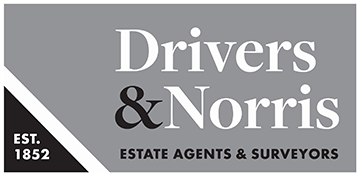
The rise in the number of owned properties across England is due to a number of social and economic factors, according to Emily Smith, head of distribution and marketing at Harpenden Building Society.
The number of residential dwellings owned outright increased to 8.8 million in 2020, up 6% from 8.3 million the previous year, figures from the Office for National Statistics (ONS) have showed.
Smith said: “It is no surprise to me that property owned outright has risen to current levels. There have been multiple social and economic factors creating this situation.”
There was an increase of 1.6 million properties owned outright between 2012 and 2020.
In addition, the ONS data showed that record low interest rates did not seem to attract home-buyers as the number of houses owned with a mortgage fell by 292,000.
There were an estimated 6.8 million properties owned with a mortgage or loan, 4.7 million privately rented houses and 4.1 million under social rent across England in 2020.
In 2012, more homes were owned with a mortgage than were owned outright, but by 2020 dwellings owned outright had become the most common, with more than twice as many as those in social rent.
When looking at the key factors impacting the number of owned properties, Smith pointed to the historical lows of interest rates in recent years, which she said had created a lack of investment opportunities.
She said: “Owning a property outright has been an obvious choice for those wanting to make their money work harder.
“Although never guaranteed, those owning property have seen beneficial returns. UK house prices rose by around 10% in 2021.”
Looking to data collected by Halifax, prices increased by 9.8% during 2021, representing the fastest for any calendar year since a 12.5% rise in 2004.
The average UK property price hit a new record high of £276,091 in December, according to the lender.
In cash terms, that was a £24,000 rise in the cost of the typical home over the course of the year.
Referring back to the ONS data, Castle Point in the East of England had the highest percentage of dwellings that were owner-occupied (82%), and Hackney in Inner London had the lowest (28%).
The London borough also had the highest percentage of social-rented dwellings, at 41% in 2020.
At the other end of the spectrum, Westminster had the highest proportion of private-rented houses, at 43%.
Of the total 24.7 million properties in England, just under two-thirds were estimated by the ONS to be owner-occupied.
The average UK house price saw double-digit growth in the year to November, gaining £25,000 when compared to the previous year, which is in line with the data collected by Halifax.
Looking to further impacts, Smith said that outright homeownership had been affected by COVID-19.
“Despite the economic hardships created for some, others have continued to earn at high levels but with little to spend their income on,” she added.
As a result of this, she said one option had been to acquire property outright or pay mortgages off with surplus cash.
Smith also believes that Brexit has played its part in the rise in the number of owned properties across England.
She said: “Cash rich expats returning from hotspots across Europe and the Middle East have been snapping up property here in England and the wider UK.
“The trend for wealthy investors from the likes of Russia and China will no doubt also add to these owned-outright figures.”
Looking at it from a wider perspective, Smith said that all these influences have played a part, but, for her, the mortgage industry has played the most significant role in helping facilitate high levels of outright ownership and the financial security this brings.
She explained that lenders have offered remortgage with capital raising options to allow for the purchase of additional property outright, or the repayment of other mortgage loans.
Smith concluded: “In addition self-build has been strong in 2021, with a significant number of borrowers building their dream home, then going on to sell their existing property so they can live mortgage free.
“As a specialist lender we have played our part in supporting specialist mortgage applications allowing more people to acquire their desired property.”
